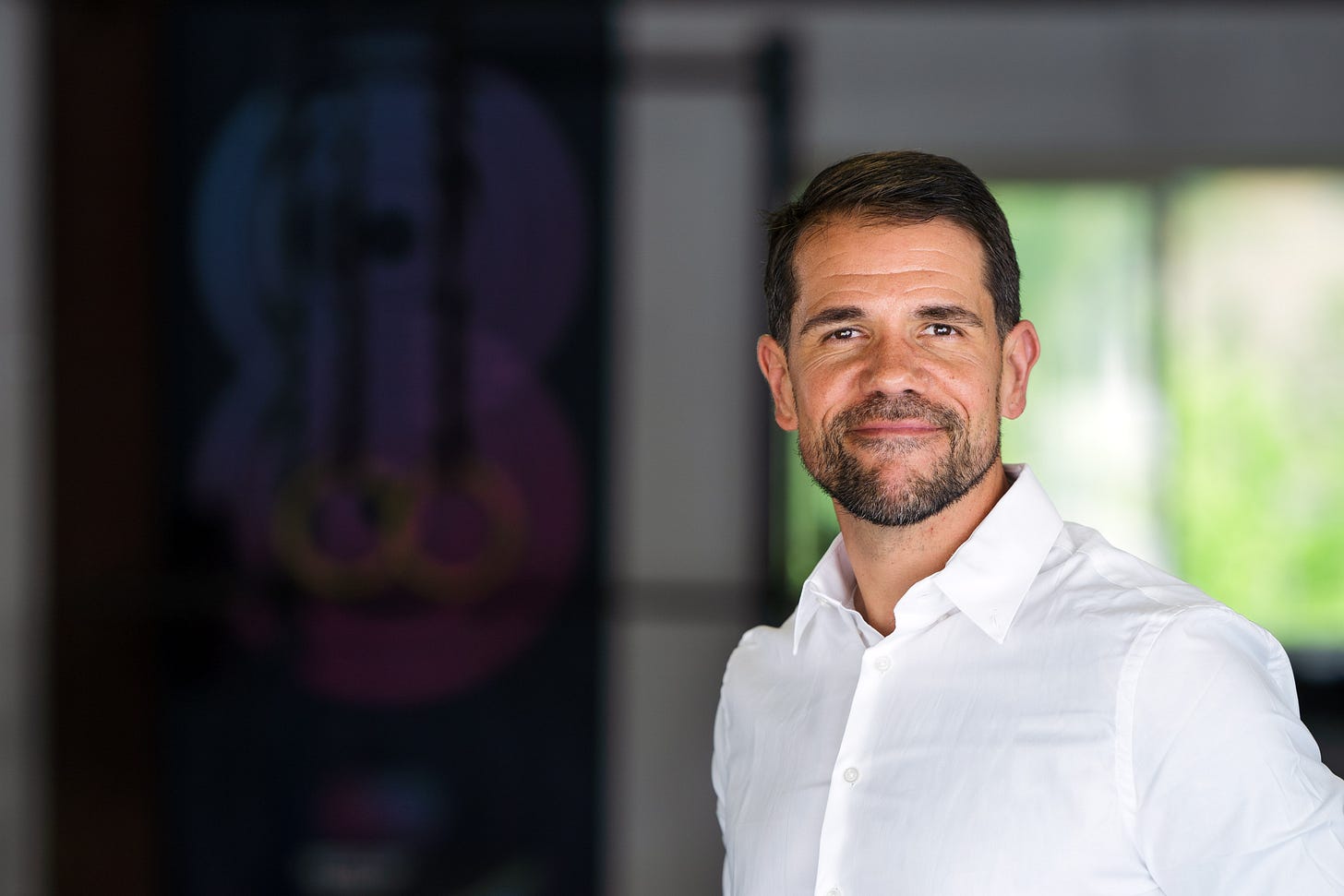I went to a talk in 2015 that changed my life…
The speaker said…
“Dopamine is the greatest signifier of human intelligence. The highly dopaminergic individual is either going to rob a convenience store, or start a Fortune 500 Company There is no middle ground.”
The great myth in modern psychiatry and the related fields that frame individuality as a pathology is that there is a normative state of being that we should all ascribe to.
A “right way” to be a human being.
Nothing in nature, science, or the history of human achievement supports this theory, yet it remains a pathway to prescribing medication to a generation of kids who have failed to hit a mark that does not exist….
The reality of biology tells a very different story about human potential.
The breakthroughs in the past 3 years of behavioral genetics reveal that the majority of our psychological and physiological traits are encoded at birth-a personal code of individual potential.
The highly dopaminergic child is going to be blessed in many ways, and challenged in others, simply due to the genetic distribution of the brain chemical responsible for motivation.
There is no arbitrary point in which individuality becomes a “disorder.”
There is only the ability to understand our physiology at an in-depth level, and make choices that speak to our potential, as well as the pitfalls that accompany each hand dealt in the cards comprised of our DNA.
The height of passion and the valley of demoralization are the defining parameters of one another. If you’ve never been really high, you don’t have far to fall. If you’ve ever been really low, the heights of human experience are greater than most spirits will ever soar.
Dopamine distribution defines our levels of satisfaction, pursuit, and the drive to thrive. We each come into this world with a baseline level of dopamine, different from one another.
This creates a social equilibrium in which one person is a serial entrepreneur, and another is more than happy to quietly tend their own garden.
The problem arises when we look at others as some failed version of ourselves, or as a failure in the strange game of pretending that we’re all born to be the same.

Think of dopamine as water in a glass. Those with a high concentration of dopamine have to be careful not to spill what is filled to the brim. Walking with a glass of water filled to the brim is more exciting, engaging, and interesting as you have to be mindful, focused, and careful….but of course, the likelihood of spilling the contents is much higher.
The trick for the thrill seeking, creative, big picture thinker is to enjoy the challenge of navigating a high risk situation, while not spilling the glass…
Maybe your glass is only a quarter of the way full. Perhaps presence to the natural beauty of the water takes precedence over the thrill of risk. There are no swirling highs and crushing lows-only a simple, appreciative joy in the act of carrying water with care.
The scientific breakthrough of the century is that we are actually individuals.
This realization opens up a portal to universal empathy-if we are willing to walk through the doors of modern scientific discovery and leave the dogma of the past behind.
Yet, wherever our baseline levels of dopamine begin, a downward spiral of dopamine depletion and technological addiction is a trap worth avoiding if we want to embody the essence of our individuality, and step into the light of our own potential.
Enter the iPhone Era: How Technology Shapes Our Physiology

In 2012 the smartphone hit the market. For the first time in history the world’s news, entertainment, and global shopping center was placed squarely in our palm, with our social circle embedded into a 24/7 online experience-and the greatest social experiment ever conducted.
They call it the Web….and we’re certainly stuck in it at the moment.
The advent of the “like” button signaled a new era in the Digital Age.
When we show the Internet what we “like” it shows us more of what we “like.”
If it seems that an appreciation for alternate perspectives has given way to fierce tribalism that separates families and friends who’ve ended up in an adjacent algorithm, and are seeing a complete different reality on their 4x6 inch screens, it could be because we’re digitally connected to completely different worlds.
This simple, yet sinister, proposition is at the heart of a business model based on advertising technology.
Social media platforms are carefully constructed conduits for 24/7 commercialism.
Whether we’re buying a new pair of shoes, downloading an app for 99 cents, or exchanging personal data for the privilege of free entertainment, we are in the marketplace of the mind, and we are the products.
Staying street smart in the social media landscape requires a working knowledge of our own physiology. When it comes to the brain chemical dopamine-the molecule of motivation-the rule to remember is that what goes up must come down.
Dopamine is the brain chemical responsible for motivation and drive. No matter what we are pursuing, dopamine is the brain fuel for the pursuit.
When we scroll on our phones, the content is curated for us based on our previous likes. This means that we see what is most likely to a.) engage b.) outrage c.) incentivize us to keep on clicking until we’re in a dopamine depleted state, which feels exactly like depression because, physiologically, it is.
A deliberate reduction of dopamine in rat experiments causes rates to passively starve when sitting within striking distance of their food.
Although they are hungry, and food is literally inches away from their mouths, they do not have the will to expend the energy required to not starve in the proximity to life saving sustenance.
This is a dramatic example of the impact that blocking dopamine has on the brain. For a generation of kids (and adults) who are scrolling over 7 hours per day on devices, the elevation in dopamine, followed by an inevitable decrease in baseline dopamine levels, leads to a demotivated, demoralized, and depleted state. The solution?
That’s a complex question.
What is obviously not the solution is much more clear.
We can not place a generation on addictive medication for the natural response to constant digital stimulation without adding a raging drug addiction epidemic to the current information and entertainment addiction that we are all experiencing to some degree.
There was an old lady who swallowed a fly…

There was an old lady who swallowed a fly
I don't know why she swallowed a fly - perhaps she'll die!
There was an old lady who swallowed a spider,
That wriggled and wiggled and tiggled inside her;
She swallowed the spider to catch the fly;
I don't know why she swallowed a fly - Perhaps she'll die!
There was an old lady who swallowed a bird;
How absurd to swallow a bird.
She swallowed the bird to catch the spider,
She swallowed the spider to catch the fly;
I don't know why she swallowed a fly - Perhaps she'll die!
There was an old lady who swallowed a cat;
Fancy that to swallow a cat!
She swallowed the cat to catch the bird,
She swallowed the bird to catch the spider,
She swallowed the spider to catch the fly;
I don't know why she swallowed a fly - Perhaps she'll die!
There was an old lady that swallowed a dog;
What a hog, to swallow a dog;
She swallowed the dog to catch the cat,
She swallowed the cat to catch the bird,
She swallowed the bird to catch the spider,
She swallowed the spider to catch the fly;
I don't know why she swallowed a fly - Perhaps she'll die!
There was an old lady who swallowed a cow,
I don't know how she swallowed a cow;
She swallowed the cow to catch the dog,
She swallowed the dog to catch the cat,
She swallowed the cat to catch the bird,
She swallowed the bird to catch the spider,
She swallowed the spider to catch the fly;
I don't know why she swallowed a fly - Perhaps she'll die!
There was an old lady who swallowed a horse...
She's dead, of course!
Our cultural fascination with the quick fix has been foreshadowed in the parables of the past.
If there is one warning that continues to arise from the pages of history, poetry, and prophecy from our greatest minds -the highly dopaminergic maverick and the understated observer of social trends alike - it is to avoid the temptation to find a shortcut to a destination in which the travel is the purpose of the journey.
The road to self-development, self-discovery, and self-knowledge requires an understanding of the brain and body, and an operating manual for our own physiology.
Navigating the digital landscape with agency is the skill of the 21st century. Stay posted for an upcoming article entitled “Social Media Street Smarts: Maintaining Our Mental Health in the Marketplace of the Mind” where I’ll share actionable tips for using the technologies that can just as easily use us.
When we consider the acceleration of the technologies that have fascinated, captivated, and dopamine depleted a generation, we realize that we are standing at the intersection of two world’s. The first is a high agency relationship to digital tools that enhance our lives. The second is a captive audience to a commercial dopamine draining machine that leaves us drooling, depressed, and exchanging both data and dollars for another dose of digital distraction.
The Three I ‘s for Dosing Your Dopamine in the Digital Age
Intention: Never allow your relationship to the phone or tablet to be one of compulsion, as opposed to intention. Ask yourself: What is my aim in logging onto the Internet. Post, ghost, and get back to the real world as soon as possible
Interoception: Tune into how you feel when using your phone-if your mood, motivation, or excitement about what you’re engaging with online begins to diminish even slightly, escape. It’s going to be a downhill dopamine roller coaster from here. We weren’t designed for constant digital stimulation. The skill of the century is tuning into our own physiology while interacting with technology, and assuring that we’re the ones behind the wheel-not the tech companies who earn based on time spent on site.
Internal Foundation: Remember that sunlight, exercise, hydration, nutrition, and sleep set the foundation for our dopamine baseline. When the foundation is strong, we have a greater buffer from the dopamine draining technologies that are part of our every day lives. When it is weak, we are beginning our engagement with the digital world from an already dopamine depleted state
The intersection of evolution is defined by our ability to thrive in an age of abundance, addictive technology, and constant pleasure only an arms width away.
“Technology is a beautifully shiny double edged sword.” - Angela Scanton
The future belongs to those who navigate the digital age with deliberation, clarity, and focus.
As we barrel towards the future at a blinding speed, the skill of the century is learning to operate our physiology first.
We’ll be preparing youth and families for the former by teaching them about the power of their physiology, first. Join our Evolution of Health event in New Jersey on April 12th and be part of the movement! Send us a message for more details on this event designed for health and fitness leaders in the London area.
David Bidler is the founder of Physiology First. As a speaker, educator, and entrepreneur David is working to shape the future of health and human potential by teaching the next generation about their physiology first.













Share this post